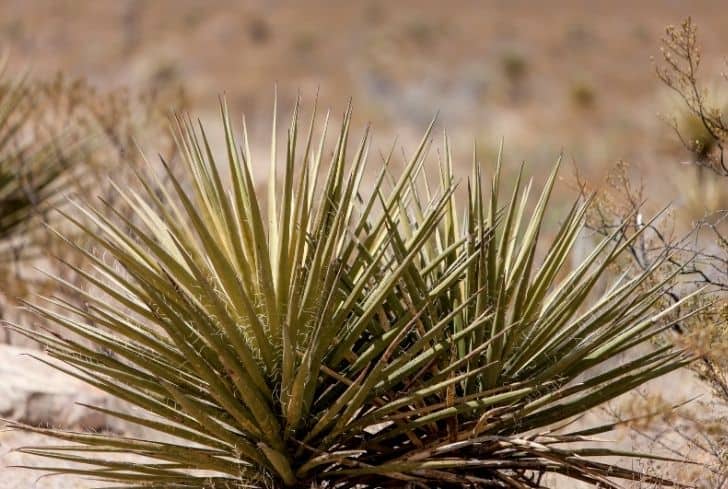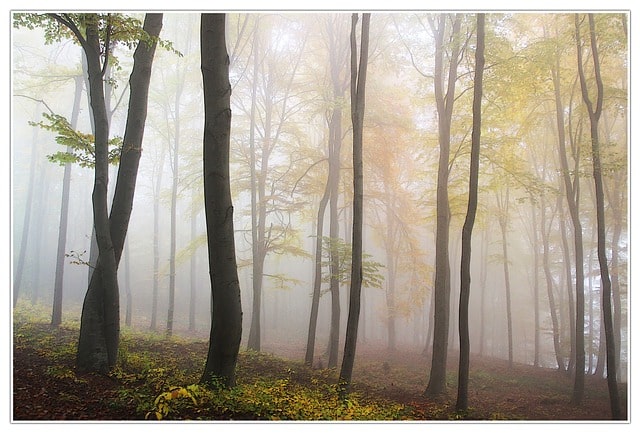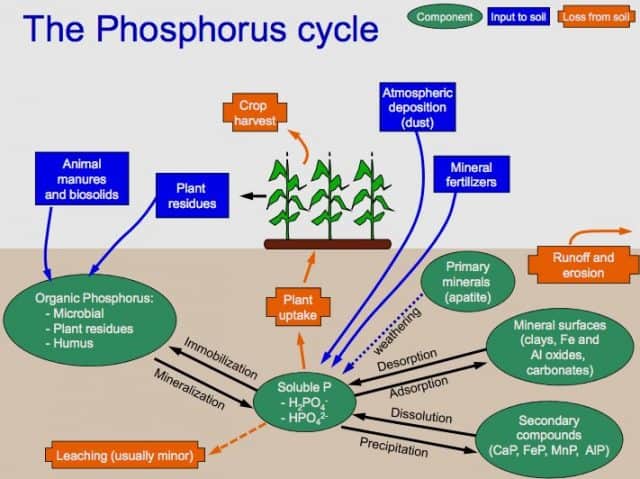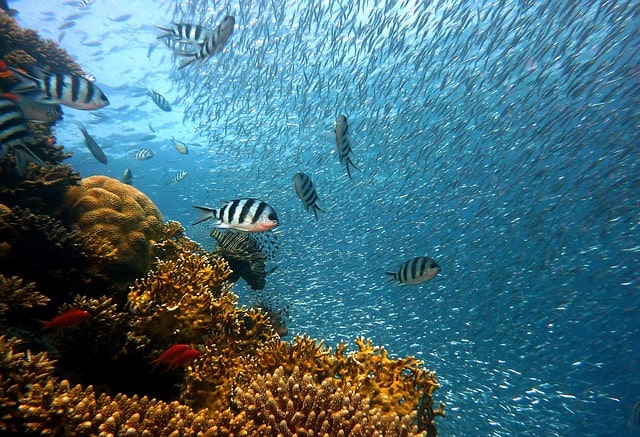How Does Photosynthesis Take Place in Desert Plants?

In photosynthesis, desert plant’s green leaves use water and carbon dioxide and fuel of sunlight as raw materials to manufacture food (carbohydrates) and oxygen. The leaf of a tree or a shrub is a miniature factory where food is made using fuel and raw materials.
Leaves use chlorophyll, a green photoreceptive pigment (a light-receiving chemical) that remain embedded in light-gathering cells known as chloroplasts, the microscopic solar collectors that help capture solar energy.
The leaf takes water from moisture that the plant’s roots have absorbed from the soil and delivered through vein-like structures. It takes carbon dioxide inhaling the gas from the atmosphere through stomata, the tiny specialized structures that compare with pores in the skin.
The leaf uses solar energy as fuel in its manufacturing process, a two-stage, complex chemical reaction converting water and carbon dioxide into carbohydrates and oxygen.
After completion of the process, the leaf sends the carbohydrates through vein-like structures to its parent plant, which uses some of the food immediately for making new leaves, stems, roots, flowers and fruits. Also, it saves some of the food in the form of potential energy to use as required to survive a drought or hard winter or to grow in spring.
The plant, as a producer, provides carbohydrates to consumers when they eat its leaves or fruits. They are the foundation for food chains. The leaf also expels oxygen, a byproduct of photosynthesis, through the stomata back into the atmosphere that living organisms breathe.
How is Photosynthesis in Desert Plants Different From Other Terrestrial Plants?
In the terrestrial plant, photosynthesis takes place with the help of leaves containing chlorophyll with the help of water and carbon dioxide in the presence of the sunlight.
Whereas in the desert plants, the leaves are transformed into spines to prevent loss of water; therefore, CAM (Crassulacean acid metabolism) photosynthesis takes place in desert plants.
In terrestrial plants, leaves open their stomata during the days and close them during the cool of the night. When it has enough moisture, the leaf proceeds with the process of photosynthesis throughout the day, taking in carbon dioxide and expels oxygen and also water vapor during the hot day. When it’s dark, solar collectors shut down, and leaf closes its stomata. It winds down the manufacturing process and rests during the night.
In desert plants, the stomata open during the night in order to obtain carbon dioxide for the process of photosynthesis. During the daytime, the stomata of the desert plant remain closed to prevent water loss.
How do Desert Plants Take up Carbon dioxide and Perform Photosynthesis?
The epidermis of a plant contains small openings called stomata (singular: stoma). Every stoma is usually surrounded by guard cells which can open and close the stoma. Guard cells let gases like carbon dioxide and water travel in and out of the plant as it requires.
In desert plants, such as agaves and yuccas, leaves close their stomata during the day and open them at night. During the night, desert plants absorb carbon dioxide and form an intermediate. Then during daytime, when the stomata are closed to minimize evaporation of water, they use this stored carbon dioxide to perform photosynthesis.
What Challenges do Plants Face in the Desert?
Leaves in desert plants face a difficult task. Leaf cells have thin walls, and the intercellular spaces are saturated with water vapor. As leaves assimilate CO2, they need to restrict the amount of water lost from the leaf via the stomata. Therefore, there is a conflict between the requirements for CO2 fixation and water conservation.
The leaf also releases water vapor through its stomata in a process called transpiration. This process can be wasteful and to the plant’s detriment in the desert. For instance, some plants in the desert, like a large cottonwood tree, may lose water supply as much as 100 gallons per hour to transpiration on a hot day. For example, plants using only C3 carbon fixation lose 97% of the water they take up through the roots for transpiration, which is a high cost that is avoided by the desert plants to employ CAM.
How Do Plants Survive in a Desert?
Some plants in the desert, where water is very scarce, have adapted a water-saving modification to the process of photosynthesis. Most of these plants are succulents that are distinguished by waxy green leaves or stem with tissues designed for storing water.
During periods of intense drought, succulents may keep their stomata closed day and night to limit water loss, shutting down photosynthesis, which scientists call idling. When moisture does become available, succulents open their stomata quickly and resume photosynthesis.
There is another water-saving approach to the process of photosynthesis developed by Cacti, such as prickly pear, cholla and barrell species. It’s their green stems and not their leaves that are equipped with stomata that open at night and close in the day.
Otherwise, they follow the same sequence of photosynthesis and respiration as the Cacti leaves serve as spines, which shield the plants from the desert sun and the leaves, or spines, have no stomata.
On clear warm days, leaf functions work best, when the sun’s light falls on its surface and absorbed water moves freely through its tissues. However, even on clear, warm days, if its water supply fails, the leaf may not be able to complete photosynthesis.
This is a common situation for a desert plant. In that situation, its parent plant must then shut down the production of carbohydrates and oxygen. In the Chihuahuan and Sonoran Deserts, plants like the ocotillo, shed their leaves to save water used in photosynthesis or wasted through transpiration.
The protection also comes from the cuticle, a waxy layer over the epidermis. It covers the plant parts that are exposed to air. The cuticle contains polymers known as cutin and cutan. It also covers several types of wax. These materials are hydrophobic, which means “water-fearing” that makes the cuticle waterproof. These keep water from evaporating out of the plant.
What is Crassulacean Acid Metabolism (CAM)? What are its Benefits?
Crassulacean Acid Metabolism (CAM) is a photosynthetic adaptation to periodic water supply found in plants in arid regions like cacti or tropical epiphytes such as orchids and bromeliads. During the day, CAM plants close their stomata and take up CO2 at night when the air temperature is low that the water loss can be lowered by order of magnitude. CAM occurs in between 5% and 10% of plants and is always associated with succulence, at least at a cellular level.
The benefit of CAM to the plant is able to leave most leaf stomata closed during the day. Plants in arid locations employ CAM, where water comes at a premium. This process can keep stomata closed during the hottest and driest part of the day, reducing the water loss through evapotranspiration, allowing such plants to grow even in that far too dry environment.
References:
https://www.desertusa.com/food_chain_k12/kids_2.html#ixzz6XkwKkKdo
https://letstalkscience.ca/educational-resources/stem-in-context/how-do-plants-survive-in-desert






